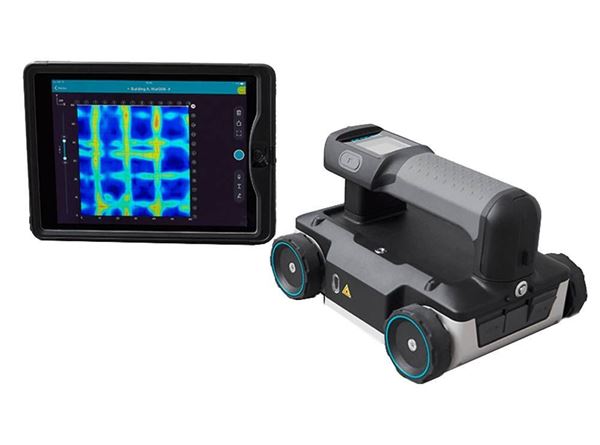Discover Hidden Obstacles with RainierGPR Concrete Scanning Innovation
Discover Hidden Obstacles with RainierGPR Concrete Scanning Innovation
Blog Article
Checking Out the Key Benefits of Concrete Scanning in Building Projects
In the realm of contemporary building practices, the usage of concrete scanning innovation has actually emerged as an essential device for ensuring task efficiency and structural integrity. From enhancing safety steps to precisely finding utilities hidden under the surface area, the advantages of concrete scanning are complex. RainierGPR Concrete Scanning.
Boosted Safety Procedures
Utilizing advanced concrete scanning innovation enhances precaution on building and construction websites by offering accurate detection of potential hazards concealed underneath the surface. This innovation makes it possible for building teams to determine rebar, channels, post-tension cords, and other obstructions prior to excavation or boring, considerably lowering the threat of crashes. By determining these aspects exactly, workers can stay clear of destructive vital architectural components, hence avoiding injuries, delays, and expensive repair work.
Moreover, concrete scanning plays an important role in ensuring the stability of existing frameworks during improvements or growths. By identifying weak points, spaces, or wear and tear within concrete aspects, designers can resolve these issues proactively, boosting the total safety and security and long life of the building. This proactive technique not only minimizes the danger of architectural failures however additionally minimizes the possibility for mishaps caused by unpredicted architectural deficiencies.
Fundamentally, the application of concrete scanning technology functions as an aggressive precaution that safeguards both construction employees and the structural honesty of buildings, inevitably contributing to the total success and efficiency of building and construction projects. - RainierGPR Concrete Scanning
Accurate Discovery of Utilities
Concrete scanning modern technology assists in precise recognition of below ground utilities, boosting construction website safety and performance. Accurate detection of energies is essential in building and construction projects to stop costly damages, task delays, and most significantly, make certain the safety of employees and the public. By using innovative scanning technologies such as ground-penetrating radar (GPR) and electromagnetic induction, building and construction groups can map out the place of hidden pipelines, cables, and other utilities with high degrees of precision.

Time and Expense Performance

Concrete scanning innovation enables construction teams to properly situate rebar, post-tension cable televisions, and various other ingrained items within concrete frameworks. This exact info aids in preventing expensive mistakes such as unintended damage to critical components throughout boring, reducing, or coring tasks. Furthermore, by recognizing prospective threats in advance, the requirement for expensive repair services or rework as a result of damages can be decreased, leading to set you back savings for the task.

Furthermore, the ability to promptly and precisely identify utilities under the surface without triggering any type of damages not only conserves time yet additionally protects against costly interruptions to existing facilities. On the whole, the time and expense efficiency benefits of concrete scanning make it an invaluable tool for improving construction task monitoring and implementation.
Preservation of Structural Honesty
Maintaining the architectural integrity of buildings and infrastructure is vital in making sure lasting security and security. Concrete scanning plays a crucial role in this conservation procedure by permitting building experts to determine prospective risks to the structural integrity pop over here of a building or infrastructure prior to they rise right into major issues. With the use of sophisticated scanning modern technologies such as ground-penetrating radar (GPR) and electromagnetic induction, building groups can non-invasively assess the condition of concrete structures, find rebar, post-tension wires, and other embedded components, and recognize any type of gaps, fractures, or wear and tear within the concrete.
Improved Job Preparation
In order to make certain the effective implementation of construction projects, thorough attention to information and comprehensive planning are necessary elements that he said stem from a comprehensive understanding of the architectural conditions determined via concrete scanning. Boosted job planning, facilitated by concrete scanning, enables construction groups to preemptively address possible obstacles, designate sources much more effectively, and develop practical timelines. By precisely identifying the area of rebar, post-tension cords, and various other ingrained items within concrete structures, task managers can develop a lot more accurate building strategies that reduce the risk of pricey errors or hold-ups. Furthermore, the data acquired from concrete scanning enables stakeholders to make educated choices concerning structural alterations, improvements, or developments, resulting in smoother task transitions and improved general job outcomes. Inevitably, including concrete scanning right into the task planning stage boosts control among team members, promotes aggressive analytic, and adds to the effective delivery of construction jobs within budget plan and routine restrictions.
Verdict
To conclude, concrete scanning supplies numerous advantages in building and construction projects. By enhancing precaution, properly identifying utilities, enhancing time and price performance, preserving architectural integrity, and helping in project preparation, concrete scanning proves to be a crucial device for effective project execution. Its capability to mitigate risks, increase efficiency, and ensure project integrity makes it an indispensable asset for building and construction professionals.
In the world of contemporary building methods, the use of concrete scanning modern technology has emerged as an essential device for making certain project performance and architectural honesty.Concrete scanning modern technology makes it possible for construction teams to accurately situate rebar, post-tension cords, and various other ingrained objects within concrete structures. Through the use of advanced scanning technologies such as ground-penetrating radar (GPR) and electromagnetic induction, building and straight from the source construction groups can non-invasively examine the condition of concrete frameworks, situate rebar, post-tension cords, and other embedded aspects, and identify any kind of voids, cracks, or deterioration within the concrete.
In order to make certain the successful implementation of building jobs, meticulous focus to detail and complete planning are essential elements that stem from an extensive understanding of the architectural conditions recognized through concrete scanning. Ultimately, including concrete scanning into the task planning stage improves control amongst group members, promotes positive problem-solving, and contributes to the successful shipment of building jobs within budget plan and routine restrictions.
Report this page